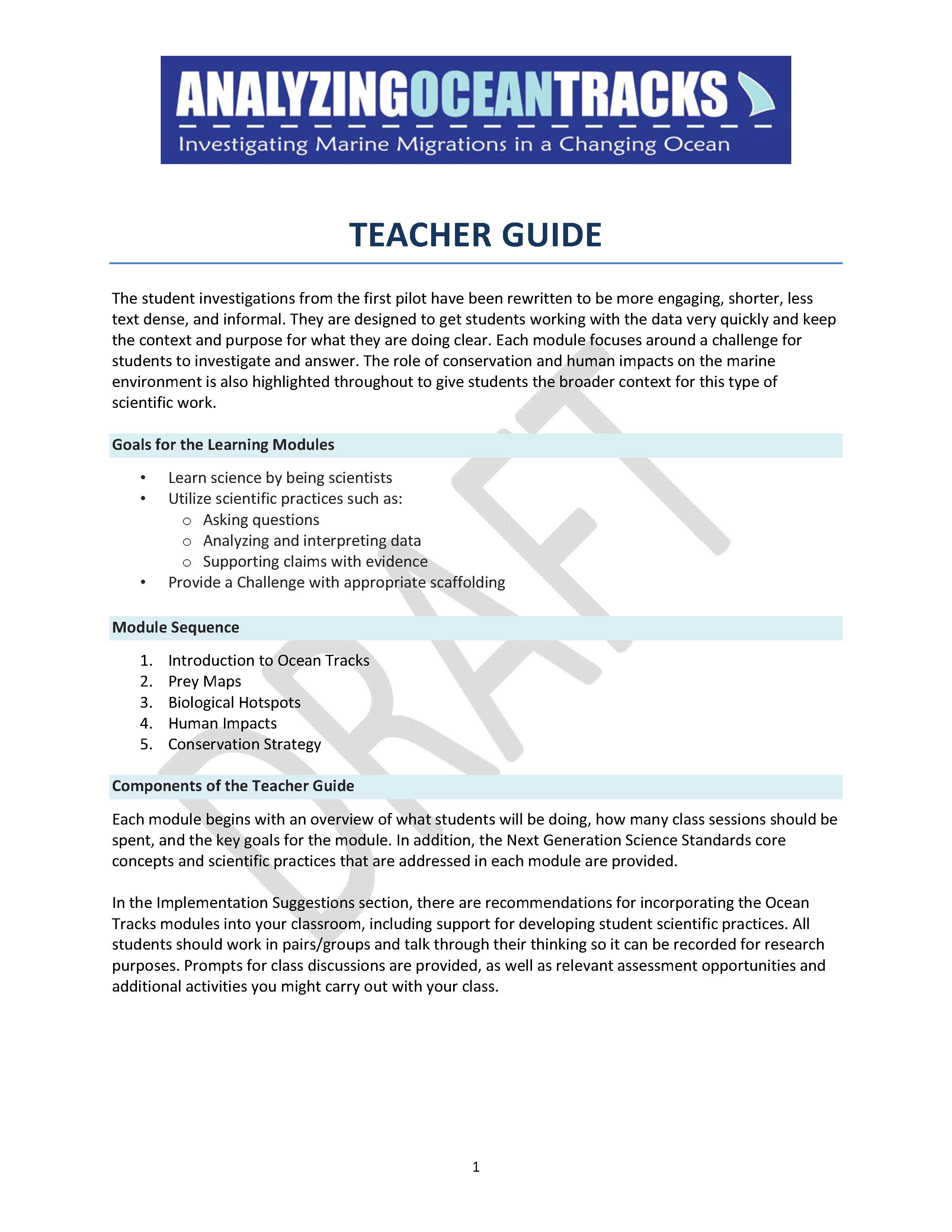High School
Learning Modules
The draft learning modules below were developed to support testing of the Ocean Tracks interface in classrooms during the spring and fall of 2013, and were designed as a set of slides that students complete in Google Docs. Since the interface is under active development based on the results of this testing, some aspects of these modules do not match the current website and tools.
In fall of 2016, we released an updated set of modules as part of our Ocean Tracks: College Edition project. Although these were designed for entry-level undergraduate marine biology and oceanography classrooms, they may still be suitable for high school classroom use. Furthermore, these modules are more consistent with the current Ocean Tracks interface, and are designed to be more effective at scaffolding inquiry and analytical thinking skills. These newer modules can be found here.
If you wish to use the original high school modules, they are below. Please click on the image to the left to download the module as a PowerPoint file on to your computer.
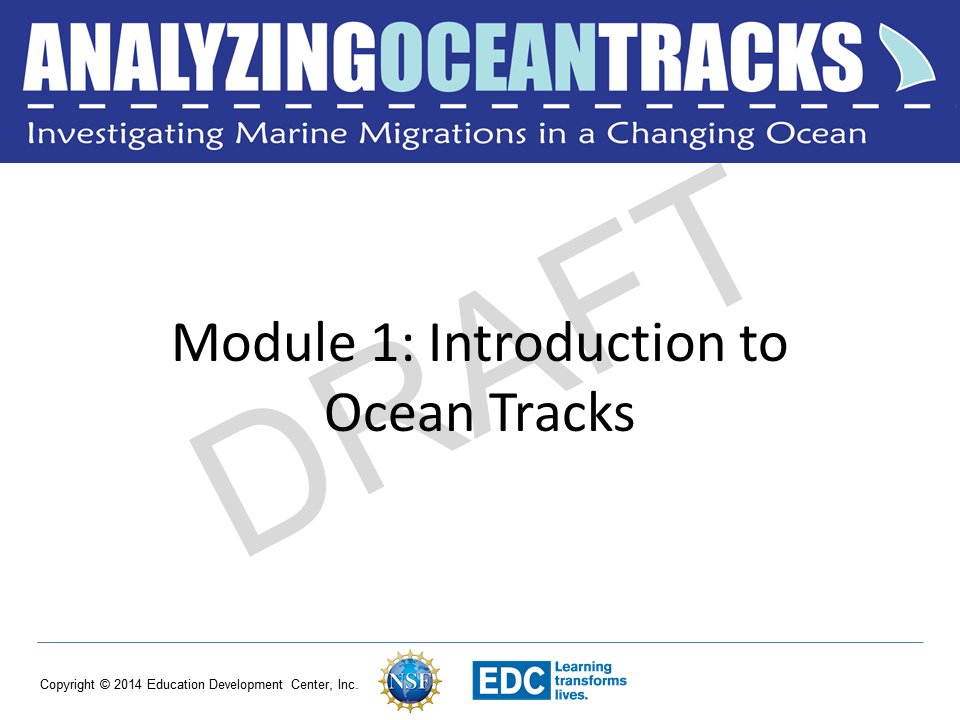 Module 1: Introduction to Ocean Tracks
Module 1: Introduction to Ocean Tracks
In this introductory module, students become familiar with the Ocean Tracks interface and species, using the measurement tools to find the individuals that have traveled the furthest and the fastest.
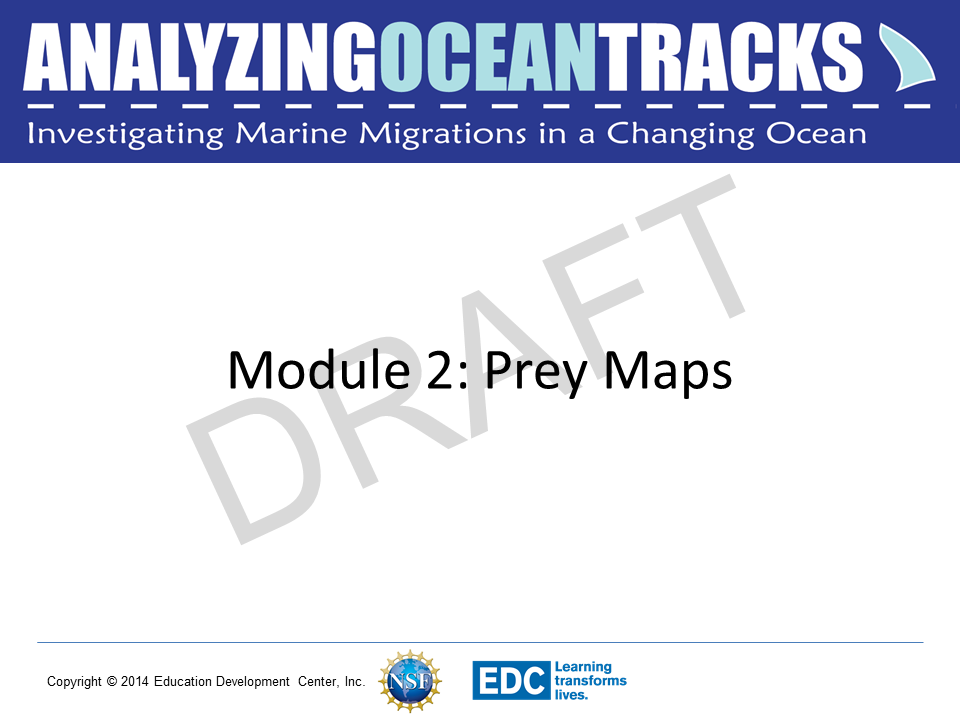 Module 2: Prey Maps
Module 2: Prey Maps
Students take measurements of animal tracks to identify feeding behavior, and then inspect sea surface chlorophyll concentration maps to develop claims about where the prey of the elephant seal are likely located.
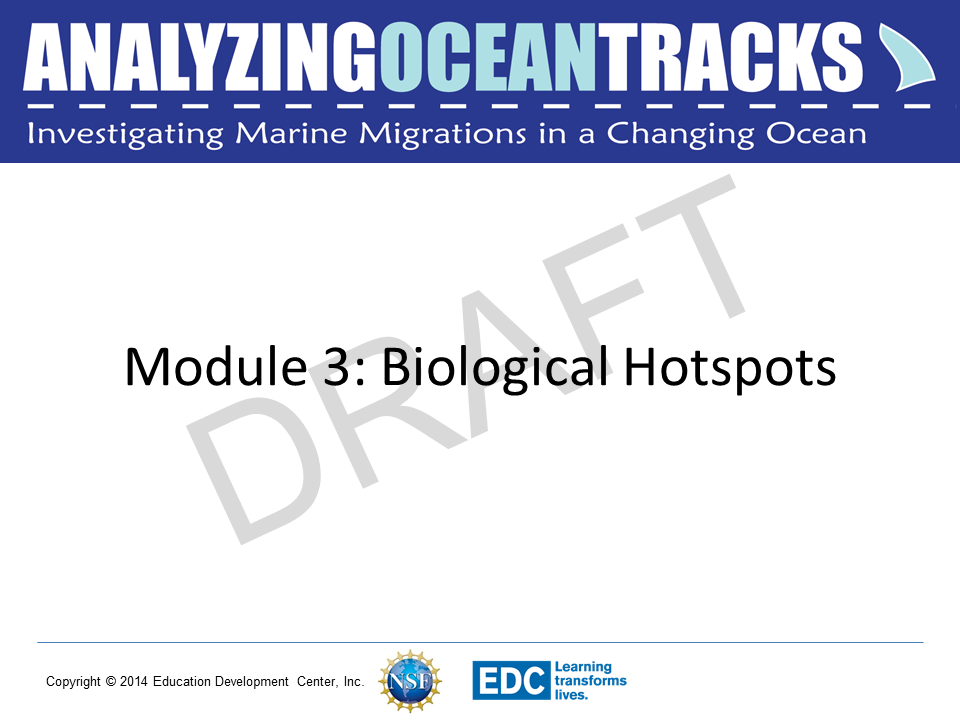 Module 3: Biological Hotspots
Module 3: Biological Hotspots
Students use the animal tracking data and the hotspot tool to find areas of high biological activity in the Pacific Ocean, and then inspect sea surface temperature and chlorophyll data to identify the underlying oceanography processes that create these hotspots.
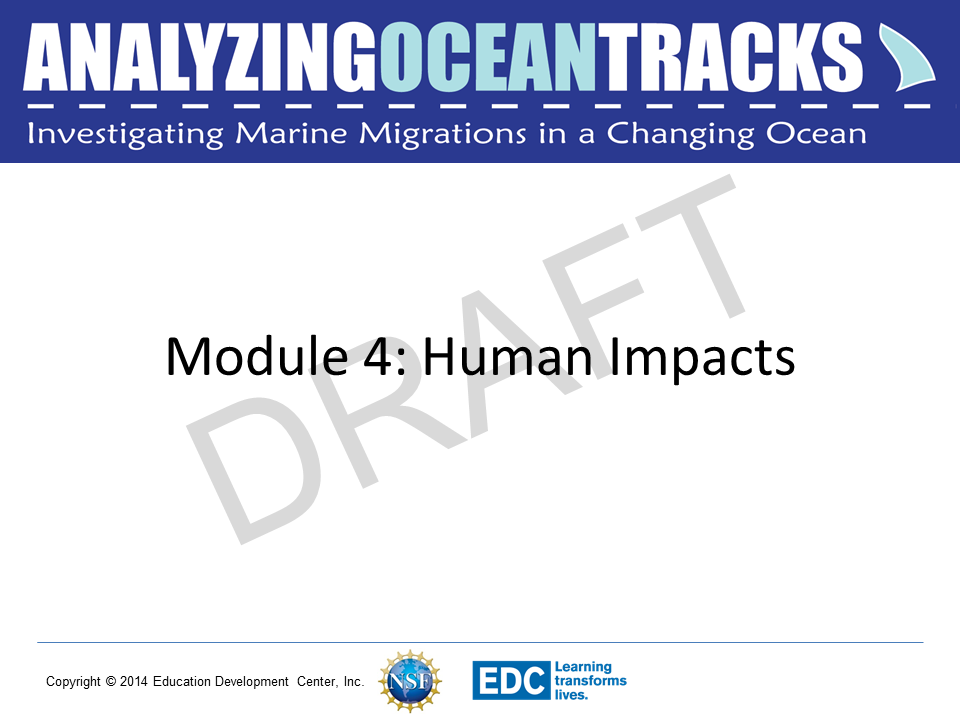 Module 4: Human Impacts
Module 4: Human Impacts
Students inspect a map overlay showing the intensity of human impacts in the Pacific Ocean to look for potential interactions between human activities and marine animals in their hotspots.
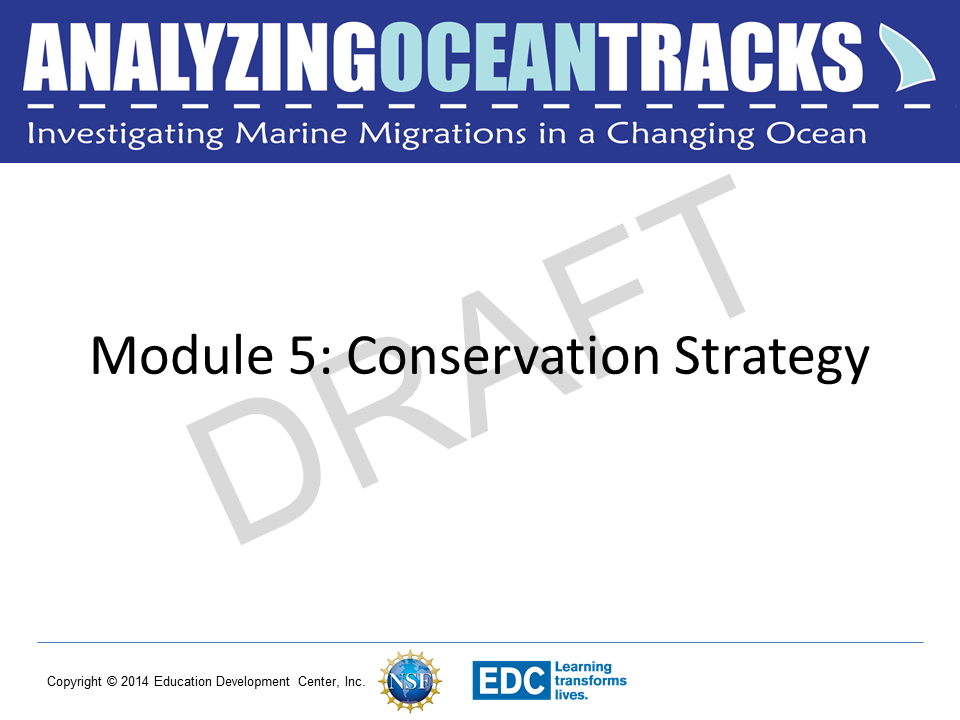 Module 5: Conservation Strategy
Module 5: Conservation Strategy
Students synthesize the data and information they’ve collected while using Ocean Tracks to design a mobile sanctuary to protect marine species.
Teacher Guide
This document was used with the Learning Modules in classroom tests during fall 2013. Click to download the .pdf file.

